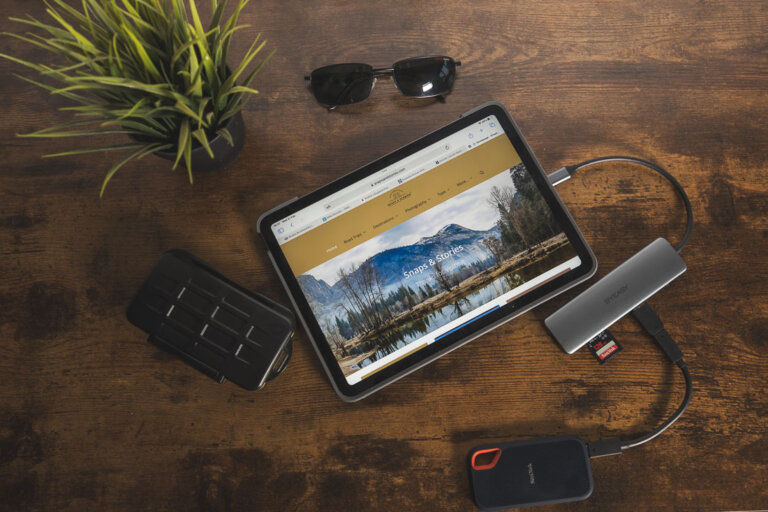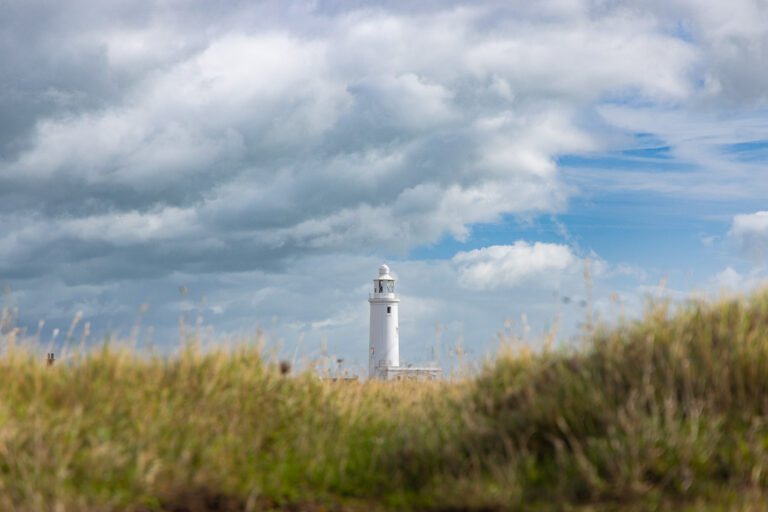The Art of the Journey: Writing and Photographing Yellowstone
“It’s not about the destination; it’s the journey.”
The utter cliché of that sentence makes me cringe as I write it. Overused, worn out—and I promise it’s the last time you’ll hear it from me.
There should be no destination. There should be no journey.

It should be an adventure. An adventure in driving—and, at least for me, an adventure in photography.
I refuse to make it about Point A to Point B, or even about what is at Point B when I arrive. The whole expedition, whether it be a day out or a three-week road trip, should be, for me anyway, never-ending.
Weeks, months, perhaps even years later, I still live the trip through my photography, my words, and of course, my memories. Now, let me be clear. This feeling of never-ending adventure does not last with every single trip.
Only the memorable ones—the special, one-off experiences. Unlikely to repeat anytime soon. As I write about this 2024 adventure in 2025, I reminisce about a 2013 adventure. Far in the past, yet that feeling of adventure, freedom, and excitement remains fresh in my mind, as if I had travelled it only yesterday.
“Weeks, months, perhaps even years later, I still live the trip”
What I am about to do, over the coming pages, is to take you with me on a photographic road trip adventure. An adventure in driving, in photography, and in a place so removed from the United Kingdom, you may question how such a place can even exist on this wonderful planet.
Why Road Trip Photography around Yellowstone?
The diversity of New York. The sun-drenched charm of Florida, and—on more than one occasion—the eclectic beauty of California.
They are all states we have explored—not completely, nor deeply but explored nonetheless. We don’t claim to be well-travelled in these states, nor do we know them in great detail.
But for a family from a small village in the South of England we’ve been fortunate enough to see more than most.
This time it is different. Our Yellowstone adventure is just one part of a bigger one across 5 states. But aside from a brief overnight in Gardiner, Montana, this book is going to focus on just one: Wyoming.
“It will fuse my love of Road Trips with my love of photography”
More specifically: Yellowstone National Park. Endless roads, unique, diverse scenery, and my camera.
It will fuse my love of Road Trips with my love of photography. For this trip, is there a better way to spend two days?
Day 1 – Cody to Gardiner
The East Entrance to Yellowstone National Park is a mere 50 miles from Cody, our starting point.
Feel free to ignore this route. In fact, I suggest you do. If coming from the East, opt for the North East park entrance. The reason? You get to traverse the Beartooth Highway. Known as one of the most scenic drives in America, it is well worth taking. It doesn’t affect me, but be warned, this road is usually closed until May.
That’s not to say the drive in via the East park entrance is not without its joys. Cody is famous for all things Buffalo Bill, and we depart, steeped in his lore, from his very own Irma Hotel to undertake the 60-minute (50-mile) drive. We carved out a little time, and paid a quick visit to the Buffalo Bill Dam and Reservoir. Worth the stop, if only for a short ride on the ‘dam shuttle’.



The road between Cody and the East Entrance is the North Fork Highway. It runs alongside the Shoshone River as we wind through the valley, keeping one eye on the road and one on the riverbank. It’s a good thing we do, otherwise we would miss the young deer, galloping beside us—joyously or nervously, only it will know.

Finding a safe parking spot and extricating ourselves from the vehicle takes longer than it does for the deer to scurry off into the roadside brush, almost as if it had never existed. Slightly dejected, we rejoin the highway, our senses heightened for fear of missing another local inhabitant.
“Fishing Bridge does, I would dare to say, hold a small place in the park’s history”
It’s only a 10-minute drive to the Lake Butte Overlook. It is a small detour, but it rewards us with sweeping panoramic views from more than 600 feet above the water. The lake stretches off into the distance, but it is still nowhere near being one of the largest lakes in Yellowstone. Online research tells me it could be down in 20th place. The other 19 must be a sight to behold.
We view, we photograph, we move on.
We will be spoiled for choice on the road ahead, Lamar Valley being one. But between here and its rolling prairies, the road we are on will uncover many wonders.
Fishing Bridge is the first thing of note. It was constructed less than two years into the 20th century to mainly offer access to Lake Yellowstone.
It is rather unremarkable. Utilitarian may be one way of describing it, prioritising function over anything more grand. But it does, I would dare to say, hold a small place in the park’s history.
The drive to it, however, is anything but unremarkable. It would be easy to miss the lone sign indicating Fishing Bridge is ahead as I gawk at the scenery that flashes by. To the left are pine-like trees that tower over me, dwarfing our small, insignificant hire car. The ones to the right are equally impressive. However, it is the view ahead that holds my gaze.
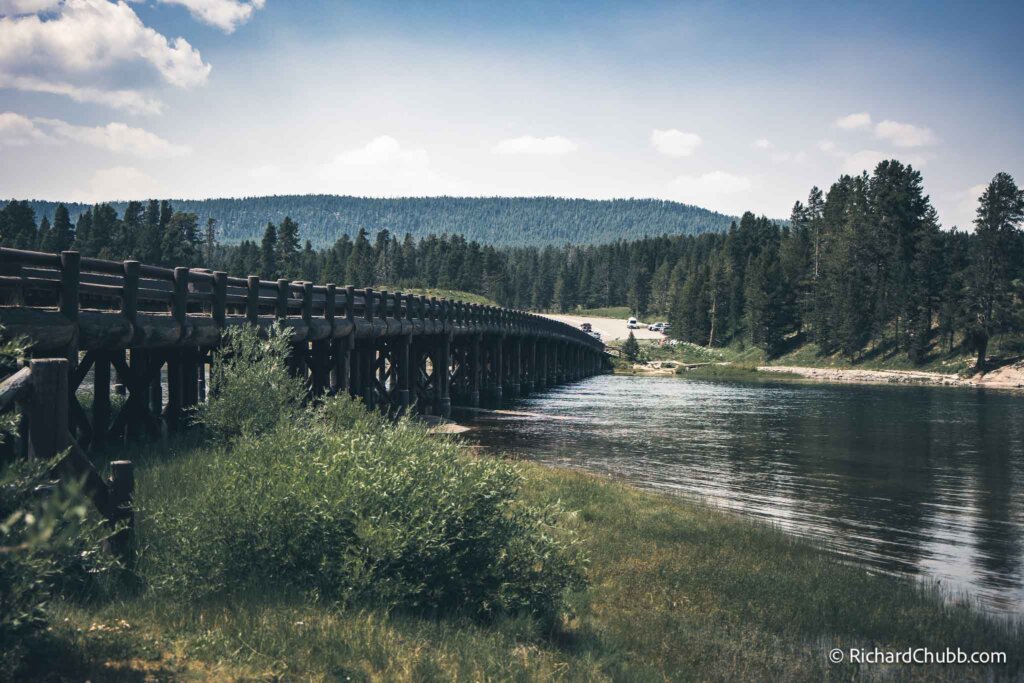
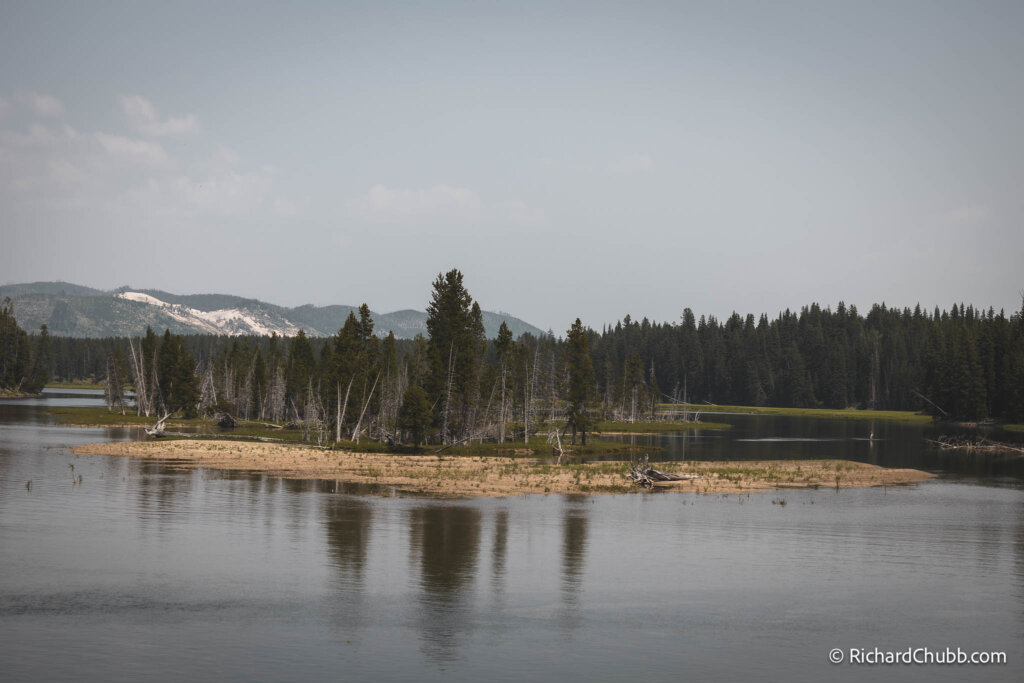
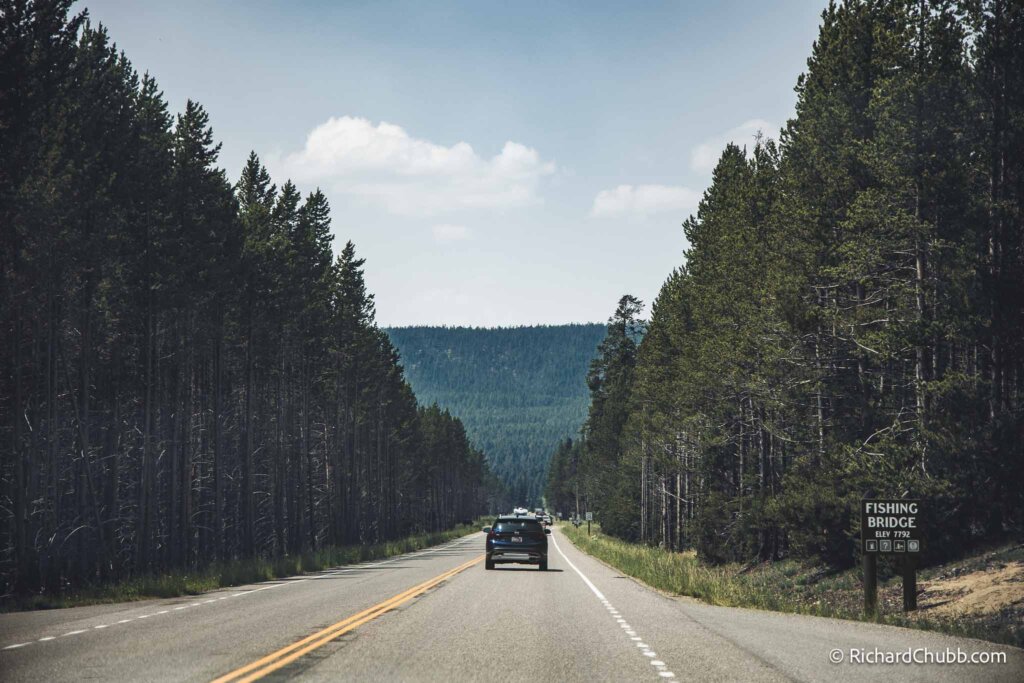
We’re heading straight for Elephant Back Mountain. The trees—uniform in colour and form—endlessly slope away from us. It is hard not to wonder: will we drive through, over, or around the ‘elephant’?
Famed for wildlife sightings, Hayden Valley is a scenic stretch we pass through en route to our next noteworthy stop: the Grand Canyon of Yellowstone. While not in their abundance like we have seen, keep your senses alert for Bison, and other natural inhabitants.
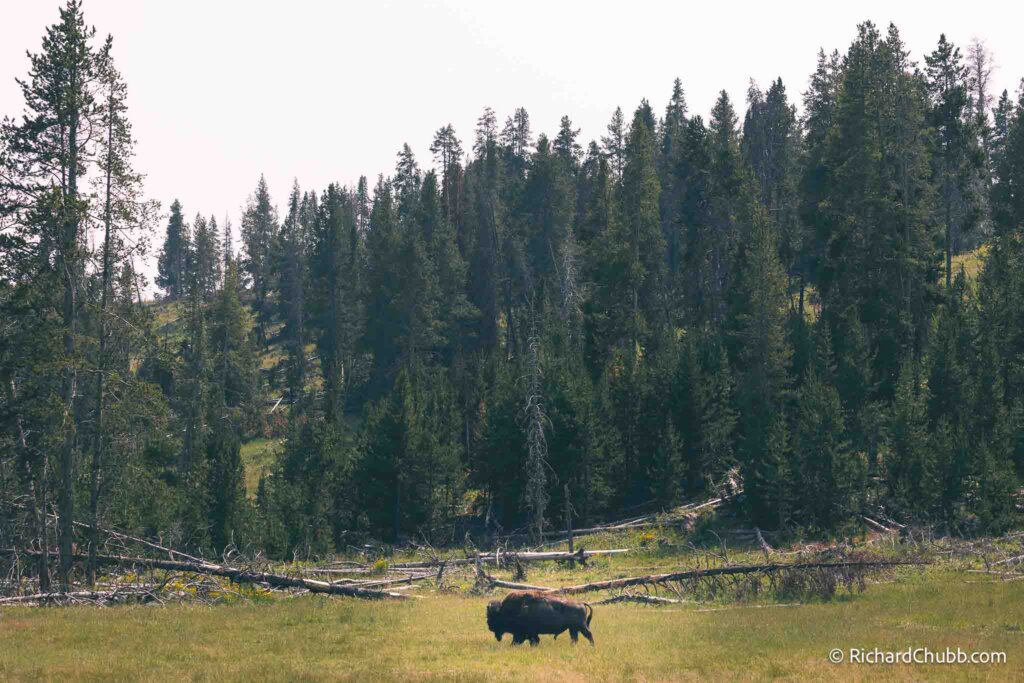
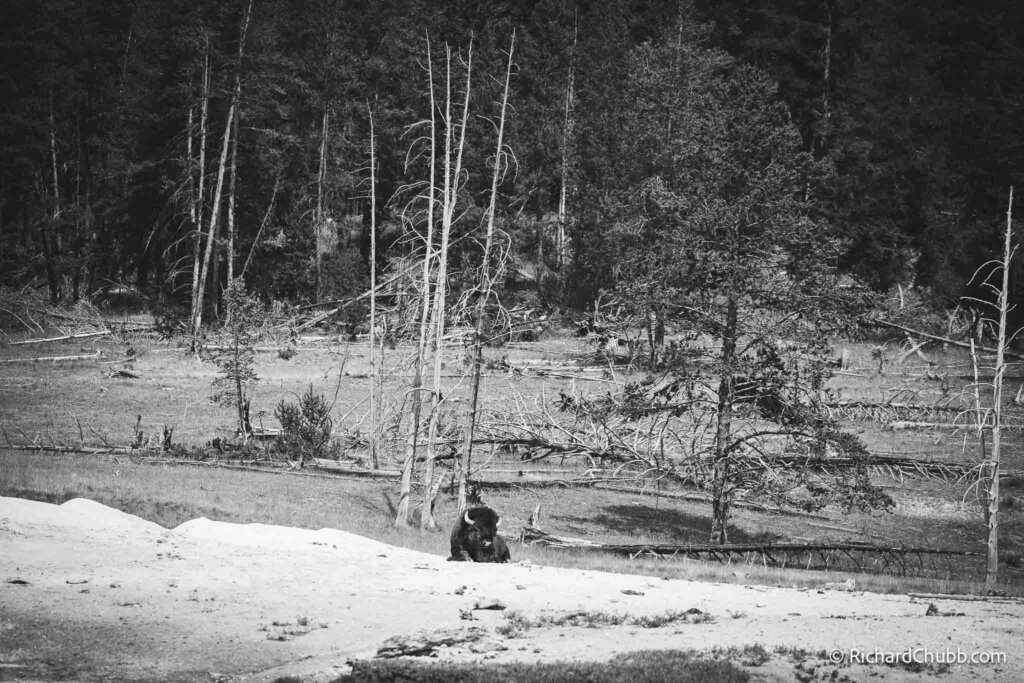
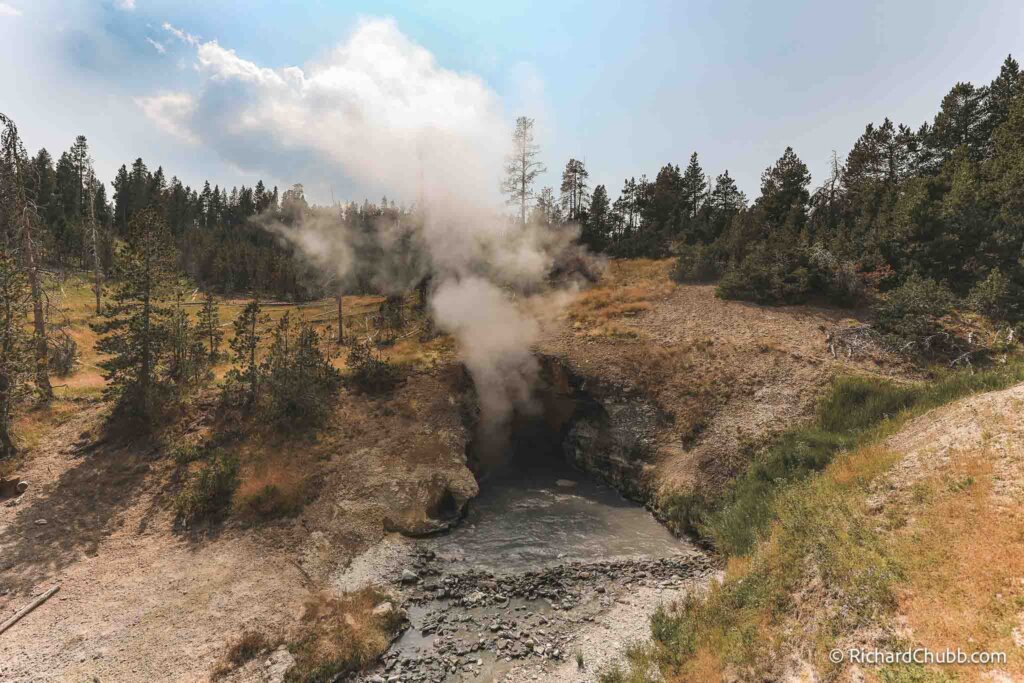
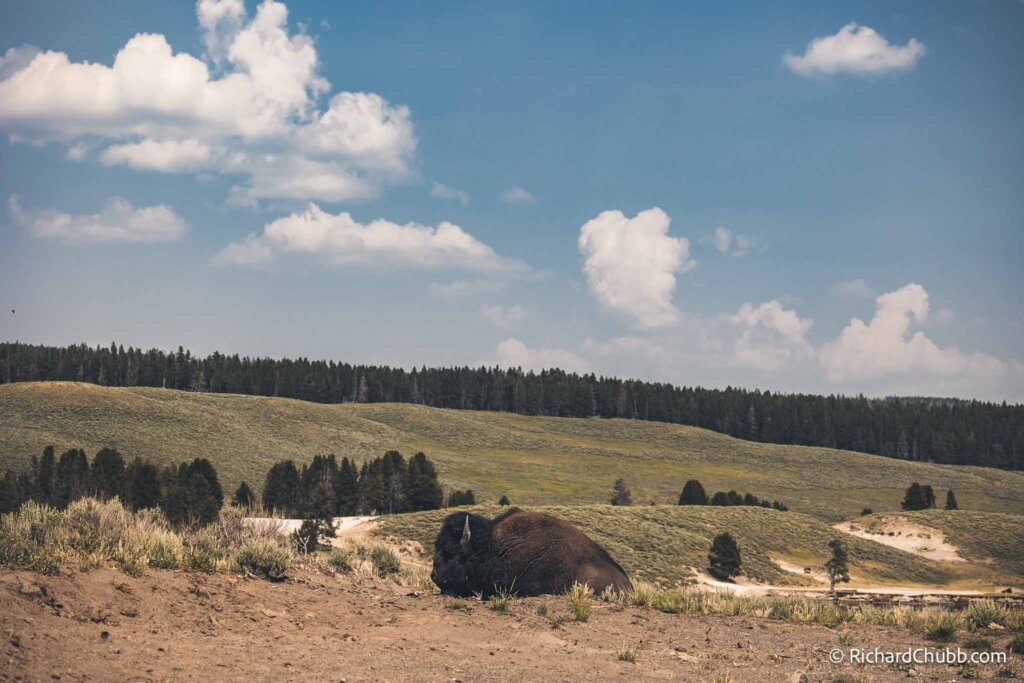
The road draws us on, the seemingly magnetic force of the Grand Canyon of Yellowstone pulls us closer.
It can’t quite rival its namesake in Arizona in scale, but Yellowstone’s canyon still wows—plunging to depths of up to 300 metres deep, and in some places stretching up to 1,200 metres wide.
Within this geological marvel you will find an abundance of natural wonders.
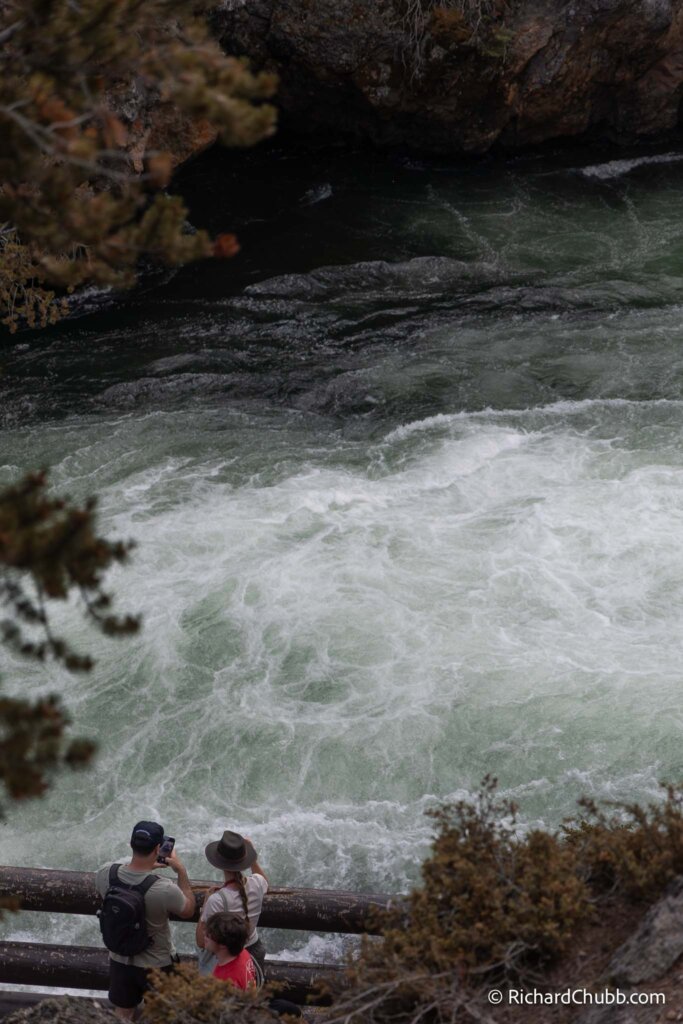
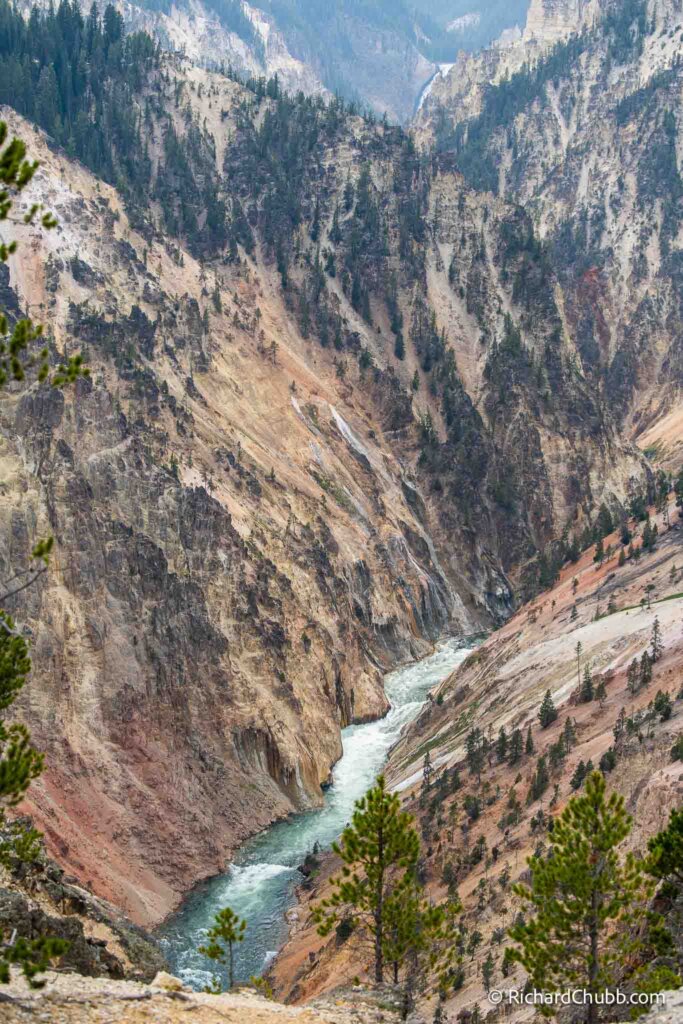
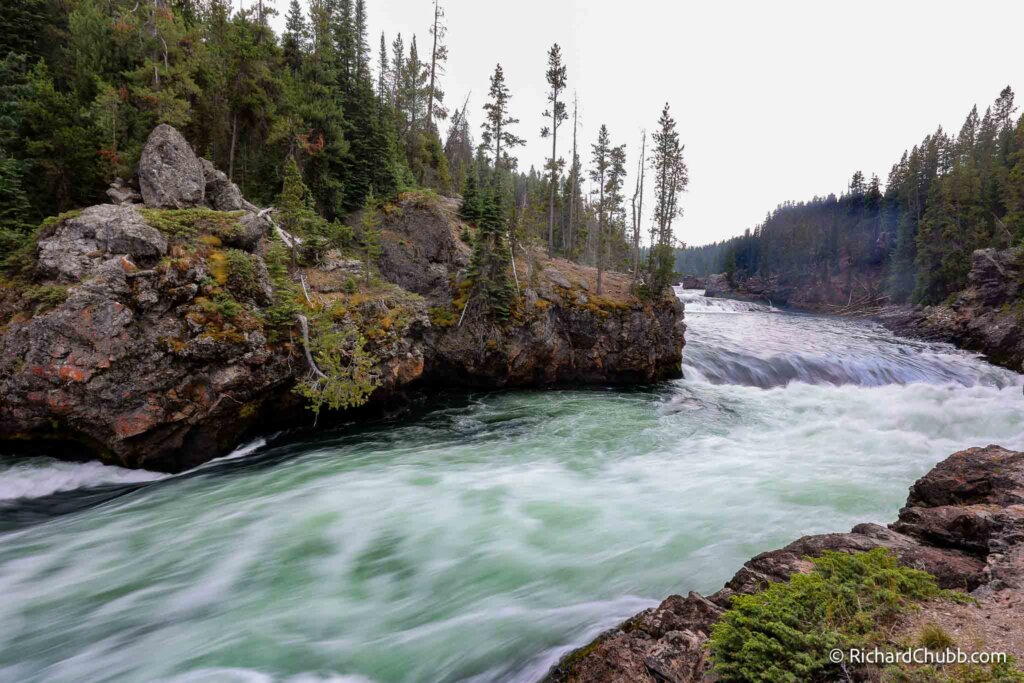
Feel the power of the Yellowstone River at the Brink of the Upper Falls. Marvel at the views from Artist Point, that inspired, and was named after, a painting by Thomas Moran. Take a quiet moment at Inspiration Point with far-reaching views down the Canyon.
See as much or as little of these wonders as you see fit, but see some of them. To skip them entirely would be a missed opportunity.
Dunraven Peak rises to almost 10,000 feet between us and our next point of interest.
Fortunately, Dunraven Pass does most of the work, and lifts us to nearly 8,900 feet, easing our way along this lofty, mountainous stretch of the Grand Loop Road (note: closed in winter).
The Washburn Hot Springs overlook is as good a place as any to pull over, and enjoy the far reaching views.
As we leave one peak behind, another looms. Mount Washburn rises to our right, but the scene-stealing vistas are to our left.
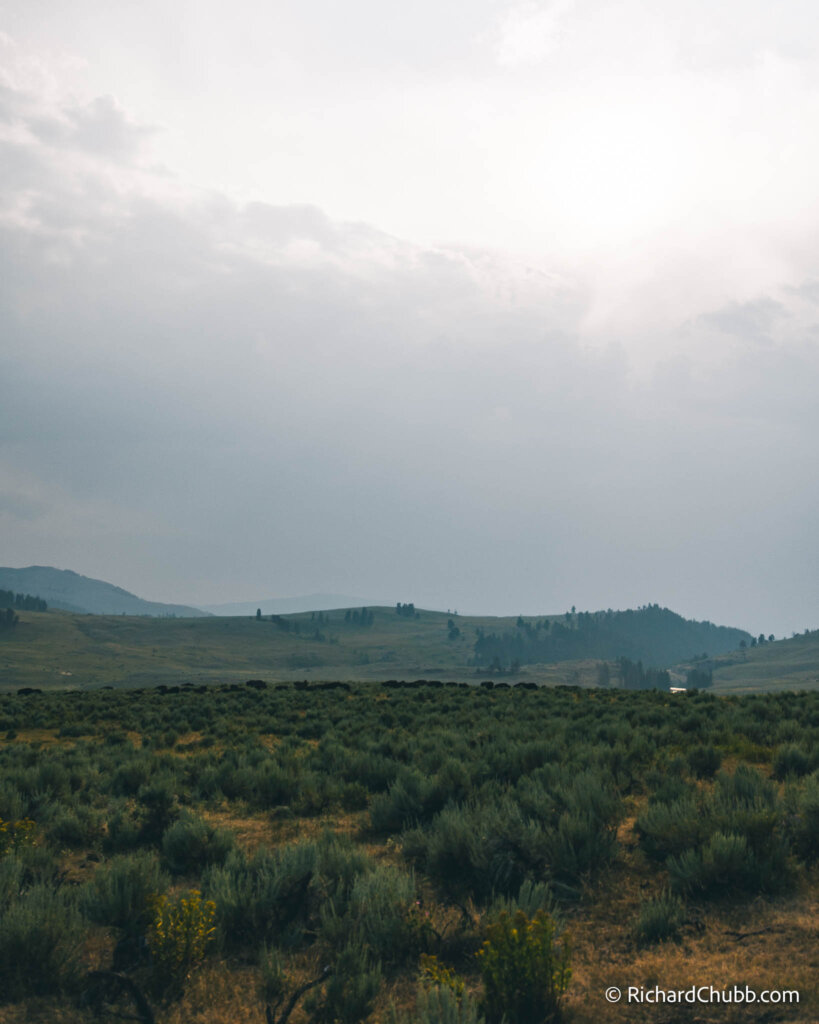
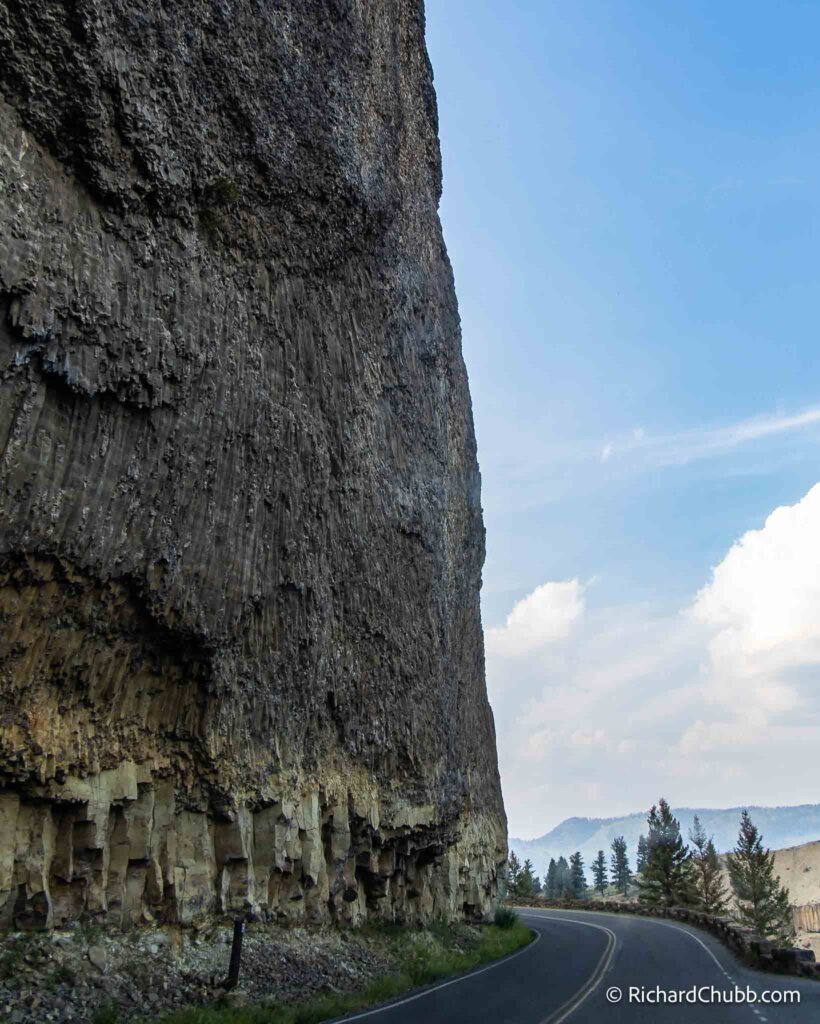
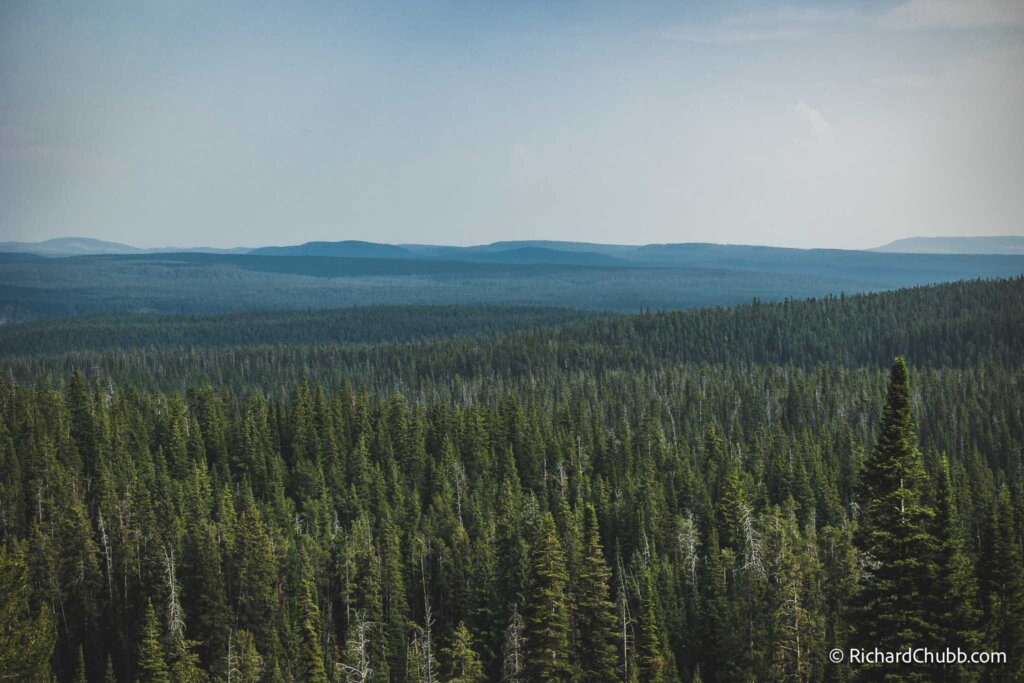
Within 30 minutes we arrive at Tower Fall. Deer roam, so we remain on high alert in the car park.
The short walk to the overlook cannot be classed as a hike, and we are not the only ones doing it. Despite the crowds, it’s easy to find a prime view of the falls. Around me, cameras clicked, and selfies were taken. Tower Fall is perfectly framed by the pines. Deep green, with a hint of golden colours around their edge.
We have been on this adventure all day, so it is no surprise that, by now the sun is slipping from the sky. Lamar Valley is calling, and we answer that call.
The drive from here is relatively short, but still full of interest. We turn off Grand Loop Road onto US-212, which is also the Beartooth Highway, at its most easterly point.
There is a gentle contrast between the winding roads of the mountain passes we have already enjoyed on Grand Loop Road, and the wider, open stretch that dissects Lamar Valley. The land opens up, giving grander views, and an even grander sky.
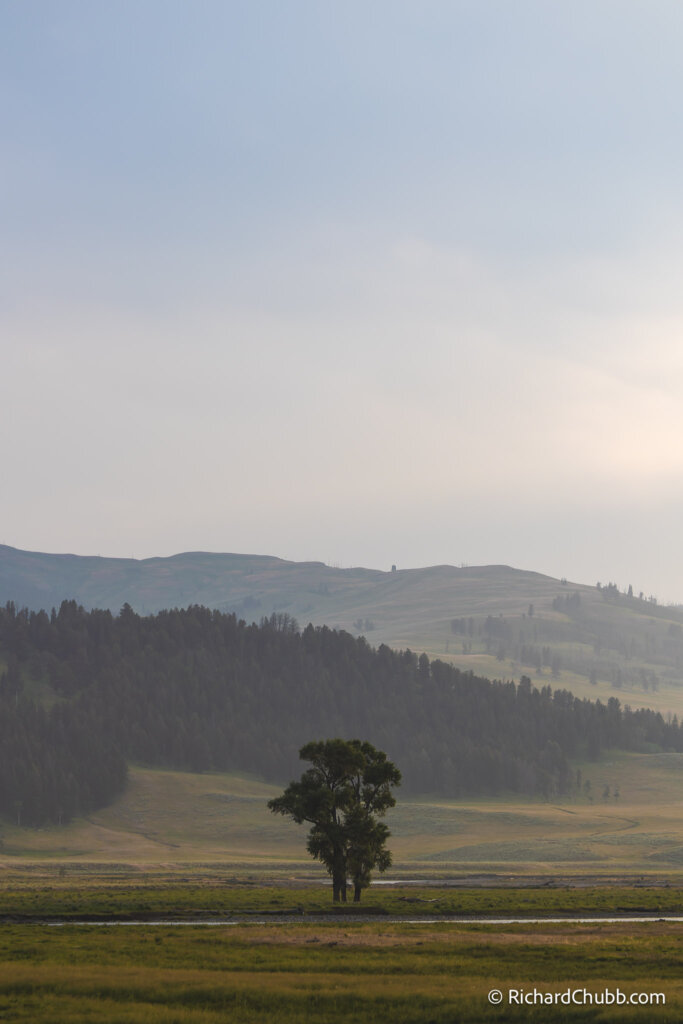
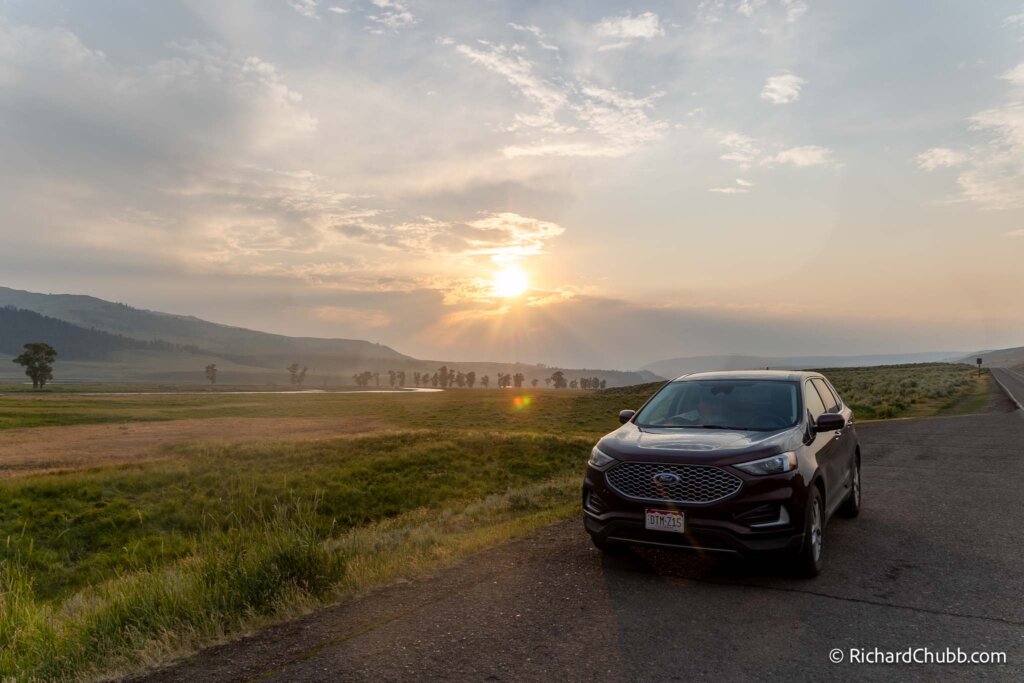
The arrival of twilight may also see the appearance of wildlife. As the sun falls further, we eagerly look out for Bison, Elk, and perhaps even a Wolf or two. We visited this magical place twice on our adventure in the hope of seeing the native creatures roam their land.
Gardiner sits just outside of Yellowstone, and is our base for the first night. Backtracking on US-212 offers a second shot at Lamar Valley, eventually rejoining the Grand Loop Road.
Absaroka Lodge might only be 1 mile from the North Entrance, but is a convenient stop on the Yellowstone loop.
“The evening peace gives me a moment to reminisce. I consider myself lucky to do this in a place of awe and inspiration”
With it being a fraction of the price of accommodation in the park itself, it is a smart choice for people like me, always with an eye on the budget.
The evening peace gives me a moment to reminisce, and I consider myself lucky to do this in a place of awe and inspiration. Standing on the balcony, I gaze from our hotel room. Below, the Yellowstone River rushes past. In the distance, my gaze following the silhouetted mountain curves as they tower above the park.
“Yellowstone has already given us more in a day than most places manage in a week. And yet, this is just the beginning!”
Hours ago, I watched a young deer vanishing in the roadside brush. Since then, the road we follow continues to fill us with awe.
In the space of 12 hours we see thunderous waterfalls crash into canyons, lakes stretch to the horizon, and the endless plains of Lamar Valley exceed every expectation!
Yellowstone has already given us more in a day than most places manage in a week. And yet, this is just the beginning!

Day 2 – Gardiner to Yellowstone Hotel
Seven hours have passed, and the view is the same, but transformed. The river still rushes past. The mountains have the same curves, only this time, the detail in both is striking.
White water makes the river noise, as the sun rises over the lodge behind me, and bounces its morning golden glow off the mountainside.
It passes me by at the time, but the location, the views, and the quiet time I am spending gazing from the balcony, makes this little motel my favourite of the entire trip.


Perhaps the setting is a major factor, within 10 minutes we find ourselves back amongst the grandeur of Yellowstone, and 20 minutes later, Mammoth Hot Springs becomes our first wonder of today.
We marvel at the result of nature’s slow and artistic process. Despite its name, the surface is cool enough for a lone bird to hop and explore the colours and textures close up.
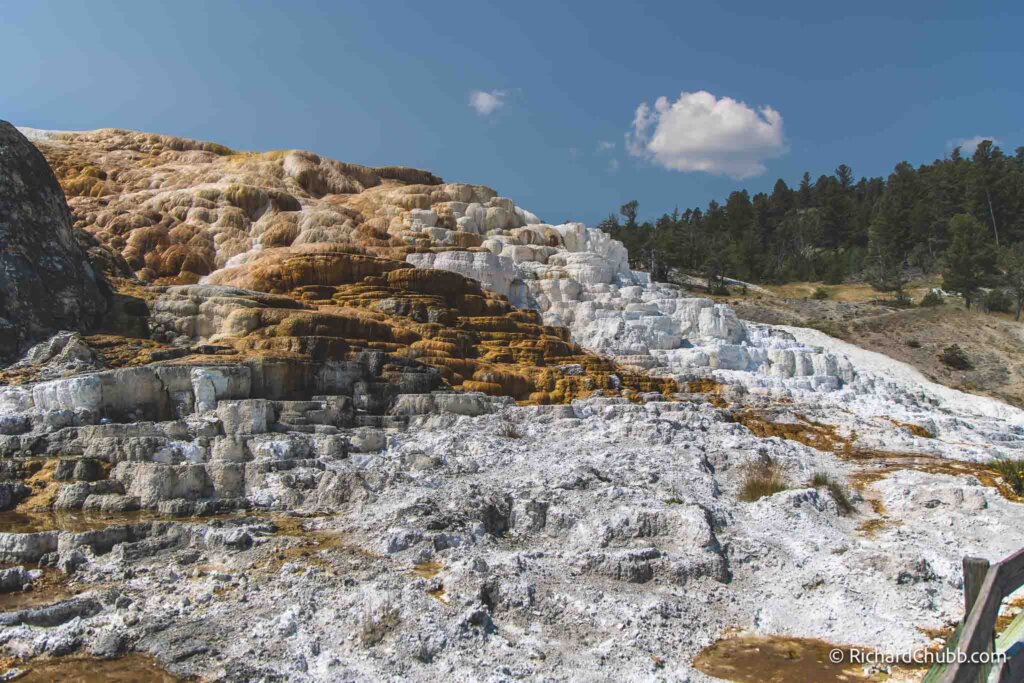
Us humans though, have to enjoy it from slightly further away. I stand in front of Devils Thumb, shaped as you’d imagine. It protrudes, as if forced from the depths of the hellish heat beneath the ground.
We take US-89 south—also known as the Grand Loop Road—as we make our way toward some of Yellowstone’s most legendary landmarks, traversing the park’s wild and scenic western side.
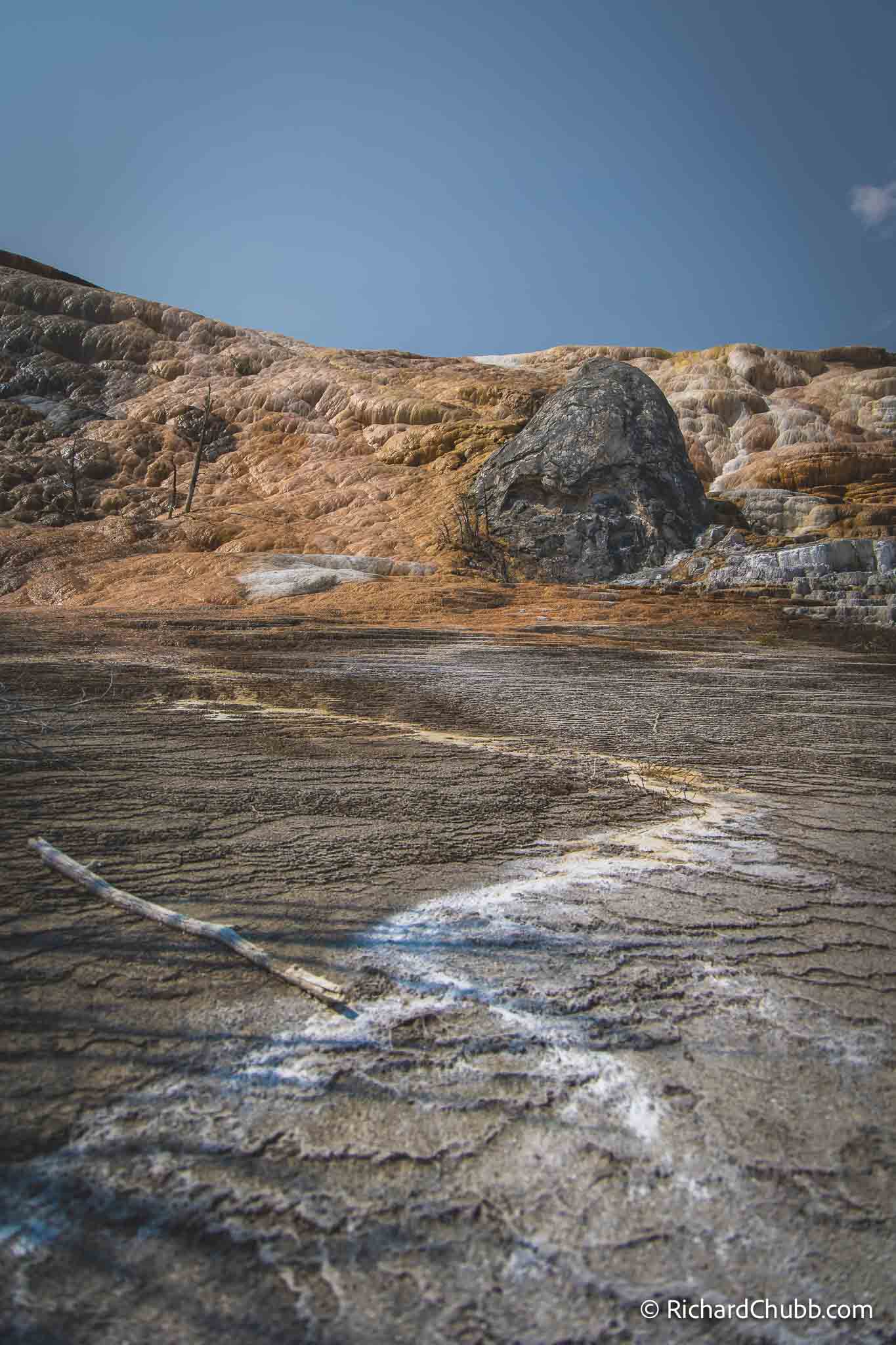
Doing it nonstop, however, would be an injustice to the other remarkable phenomena this route has to offer.
It would be a trip half done if we don’t stop at Norris Geyser Basin, Yellowstone’s hottest and oldest thermal area. Boardwalks snake across the otherworldly surface, with some stretches offering little protection. I tread carefully, as one slip, misjudgment or moment of folly could result in pain, if not worse. This is no place to frolic.



Back on the road, the journey continues south.
Our visit to Yellowstone will feel incomplete without marvelling at two iconic sights. Grand Prismatic and Old Faithful are must see, especially as this is our first time visiting. Both are unforgettable, and unmissable, and are one of the first things we think of when we remember this magical place.
It will not be rushed though. Grand Prismatic (first recorded 1839) and Old Faithful (believed to have been formed hundreds of years ago) aren’t going anywhere.
We continue down the Grand Loop Road. Beryl Spring, and Gibbon Falls are effortless roadside stops. Neither take long to enjoy and both offer glimpses into the wonders of Yellowstone.

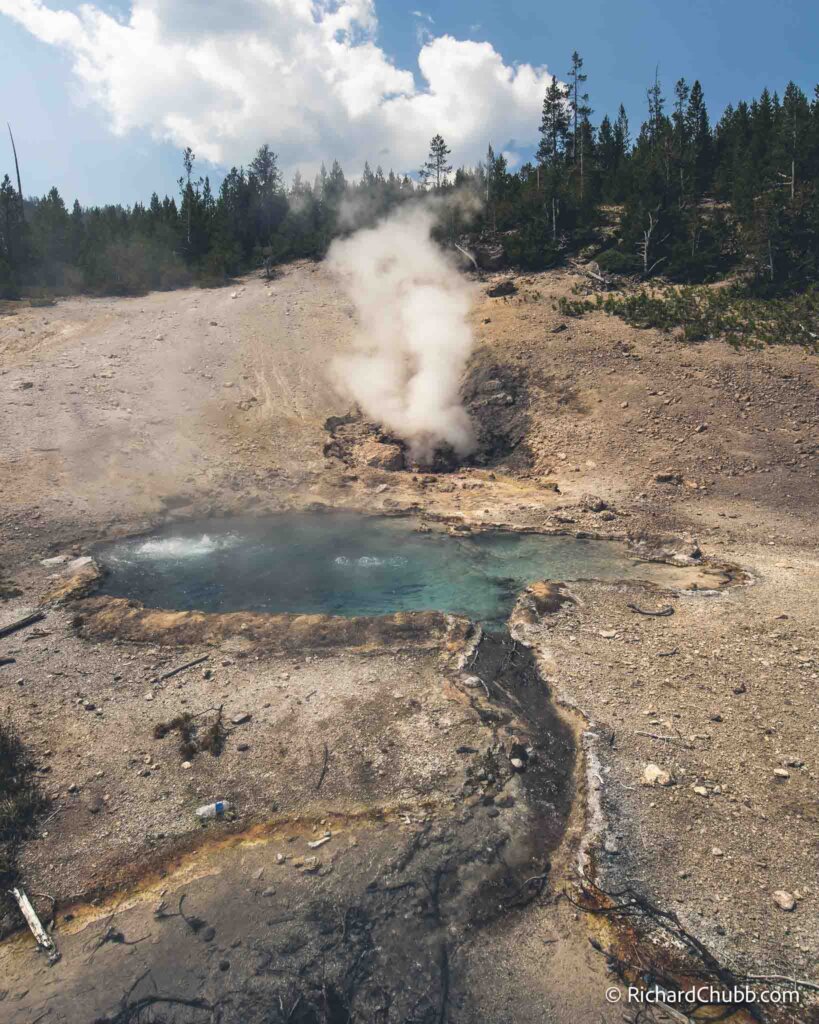
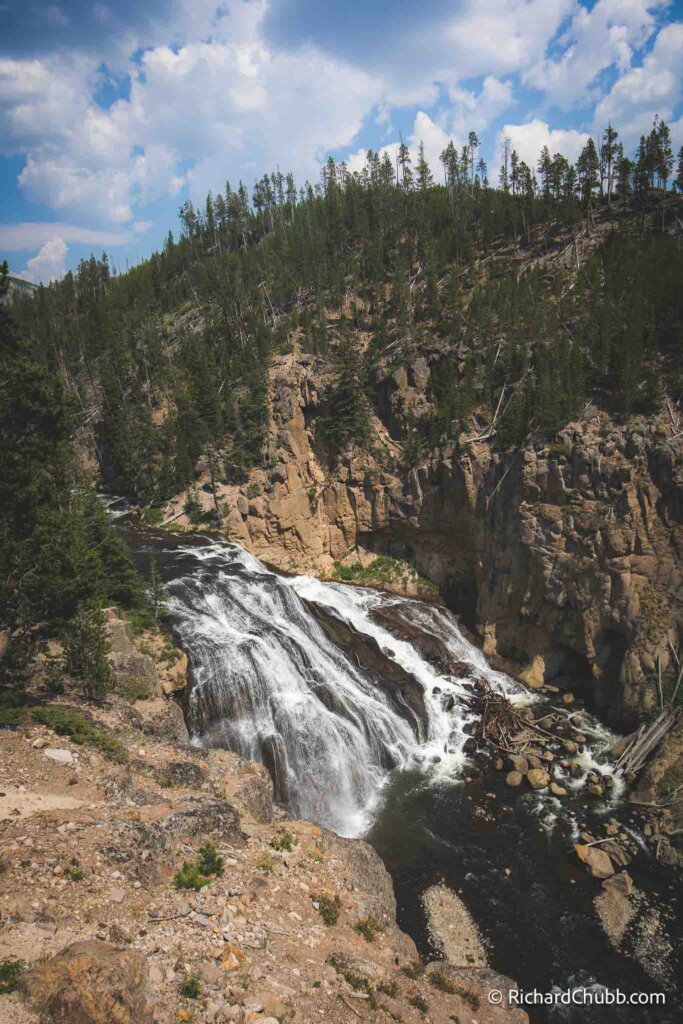
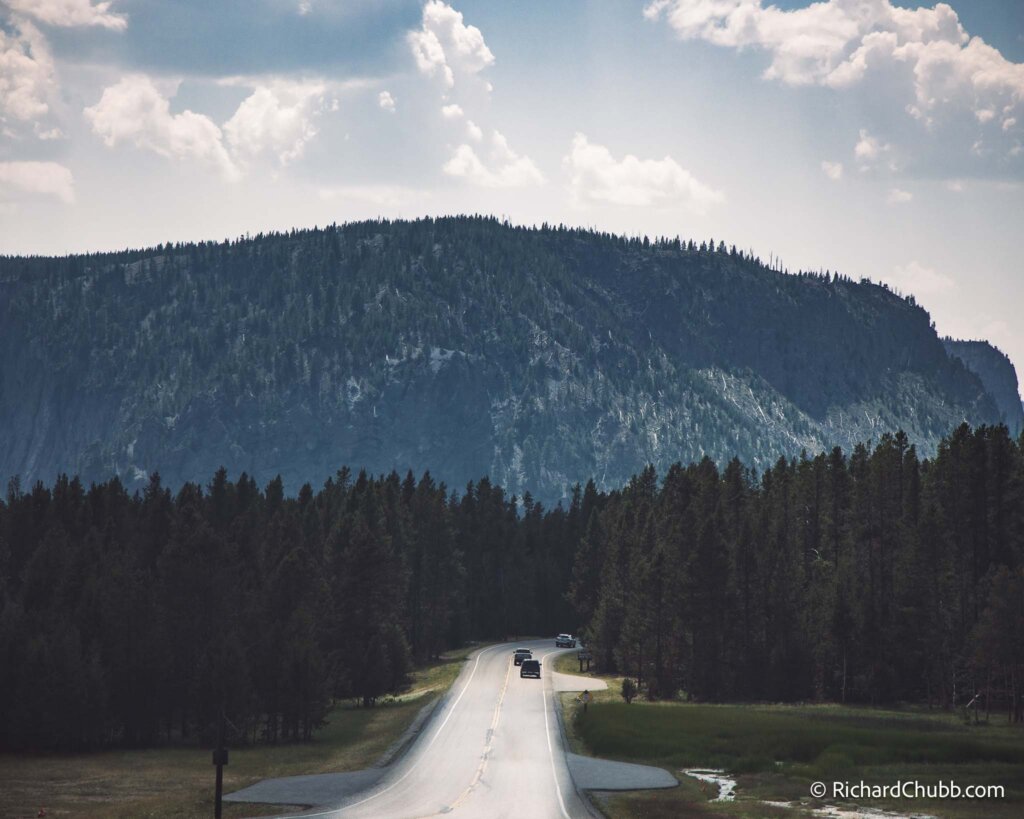
After two fleeting stops, we enjoy a more leisurely one, and perhaps even get our feet wet.
US-89 effortlessly merges with US-191, which forms the next stage in this Yellowstone adventure.


Soon after we cross the Madison River, we take Firehole Canyon Road—a one-way drive heading south. Depending on park regulations, there might be a chance to swim. If not, we pause anyway. I look down at the pulsing river below, then up—and there it is: a bald eagle gliding overhead.
We continue down US-191 to Grand Prismatic Spring. As one of the most popular attractions in Yellowstone National Park, we are not surprised when we have to queue to park. As we inch forward every few seconds, we are certain our patience will soon be rewarded.
“Grand Prismatic is THE highlight,
but it is not the only one”
We negotiate the footbridge, and are immediately greeted with a taster, as water from the Midway Geyser Basin enters the river to our left. A subtle prelude of what’s to come.
The perpetual frothing water cascades down the vibrant orange and into the Firehole River. Research leads me to believe the orange is a result of an amalgamation of hydrothermal alteration and heat-loving bacteria that has called the spring home.
“The immersive textures and vivid colours of Grand Prismatic Spring at eye level are unforgettable—but the views from above are just as essential.”






Grand Prismatic is THE highlight, but it is not the only one.
The immersive textures and vivid colours of Grand Prismatic Spring at eye level are unforgettable—but the views from above are just as essential.
We drive one mile down the road to the Fairy Falls Trailhead parking lot. From there, and on foot, we follow the trail toward the falls. Twenty minutes of steady uphill walking, combined with the heat, make it feel harder than it should.
Soon, steady uphill, turns into a steeper one, and we reach a purpose-built viewing platform—perfectly positioned to take in the full, breathtaking sweep of the spring from above.

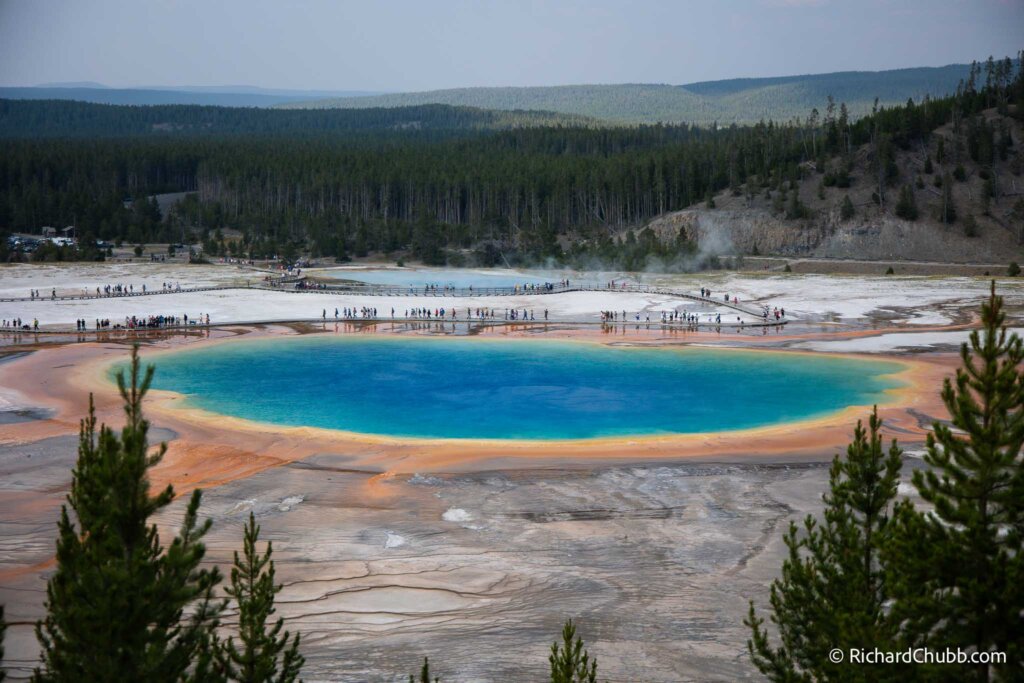
With Grand Prismatic still vivid in our minds, we head just 6 miles down the road, and the battle for parking starts all over again.
We take a seat in a prime location here at Old Faithful; we might be mere seconds from an eruption, or find ourselves lingering for well over an hour.
I look around while waiting, and see other acts here, in nature’s theatre. Off in the distance as we wait, we see other eruptions. The white plumes stand out on the mountains in the distance. Yes, they may be equally as impressive close up, but they are not Old Faithful.
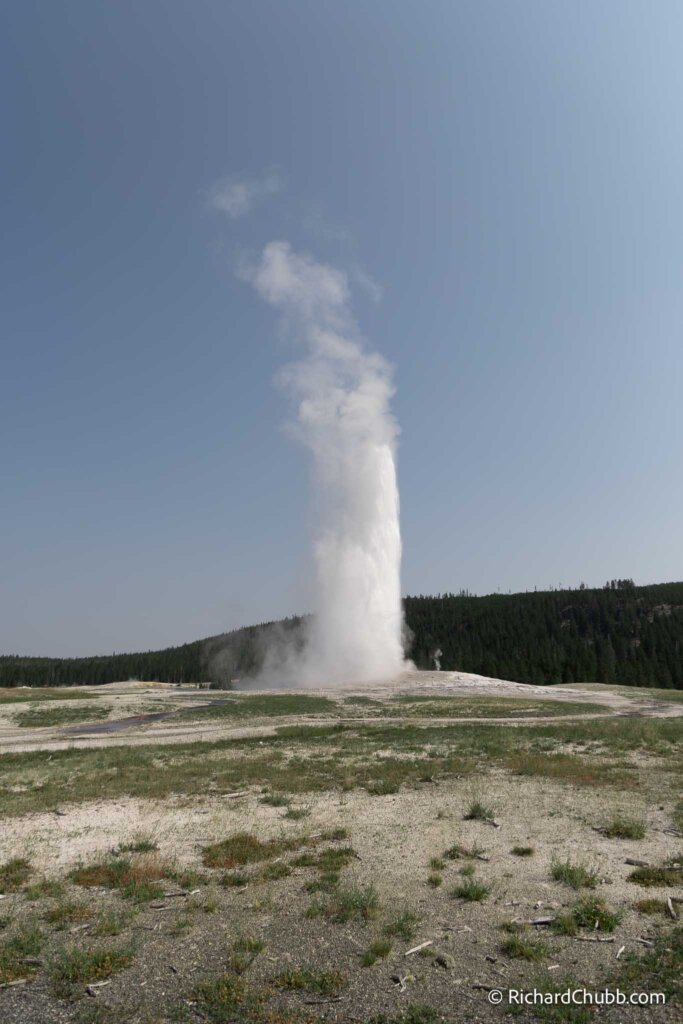
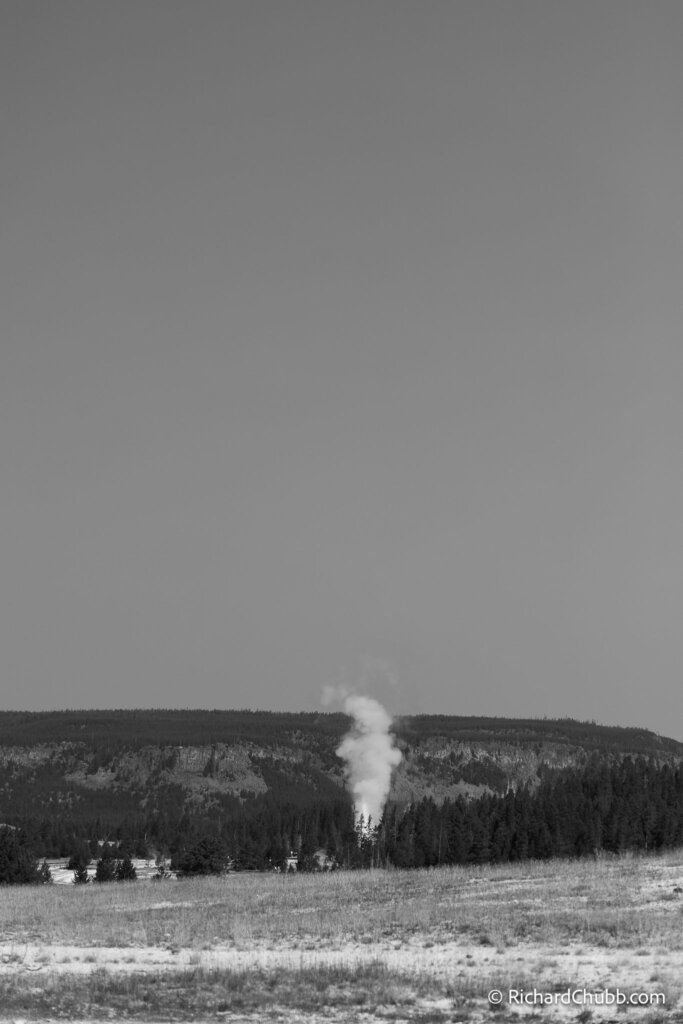
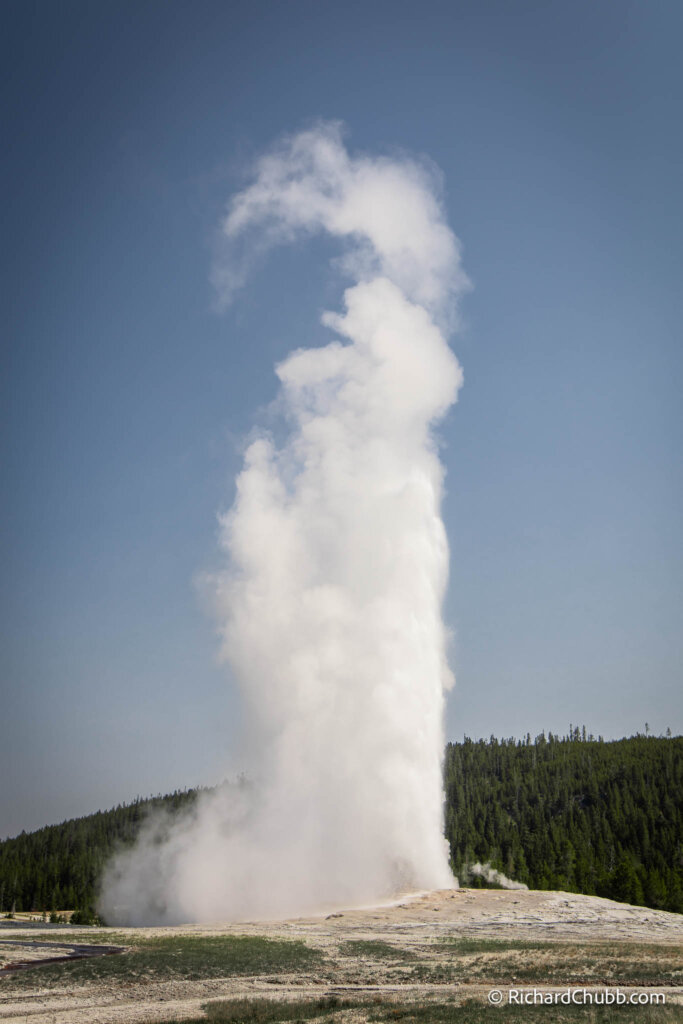
Yellowstone’s most famous geyser is not only one of the park’s biggest attractions, but is also one of the most reliable. We are three of the up to 4 million people that visit Yellowstone each year. My hunch is most will stop by Old Faithful. I doubt we will ever visit in the winter though, with organised tours possibly the only way to see this phenomenon.
We wait, with eyes and camera focused with anticipation. The show could last 5 minutes, or barely 2.
It builds gradually, with a few false dawns, a teasing spurt here or there until the eruption spews boiling water and steam well over 100 feet into the air.
It subsides, and returns to its dormant state, if only for another 90 minutes. The crowds retreat. Many wander around the boardwalks, their lust for geysers still unfulfilled and conversely for some, that is enough. We fall into the latter category and head to the car.
The natural wonders continue unabated. The adventure continues onward.
The Grand Loop Road winds eastward to West Thumb, which sits on the edge of Yellowstone Lake. And yes, there are geysers, hot springs and pools aplenty.
As with all the other basins we have had the privilege to visit, West Thumb Geyser Basin is laced with boardwalks. They carry us over the unwalkable surface, getting us closer to nature’s work than otherwise possible.
We amble along the boardwalk, continuing to marvel at the colours. I wonder how the water can be so strikingly blue, yet so crystal clear?






Steam drifts skyward from some areas, a gentle reminder of how important a role the boardwalk is playing at the moment. Not just in protecting me as I walk it, but also preserving the land it spans.
Water finds its natural path from some of the hot pools. Orange streaks follow the water’s path, the particular one we are standing over now trickles into the vastness of Lake Yellowstone
The heat is smothering. Unrelenting from both above and below. In the immediate vicinity, there is no shelter.
After spending time marvelling at Mother Nature’s inventions, we long for something man made. The confines of the car are transformed from oven to refrigerator in less than a minute—air-conditioned relief at last.
Driving north, still on the Grand Loop Road this 20 mile by 14 mile body of water dominates the landscape to our right.
While the lake is expansive, the horizon is broken by trees and distant mountains, a visual reminder of just how vast and diverse this unique place on earth is.
My Yellowstone Photography Road Trip comes to an end
It dawns on me we have come full circle in the last 2 days. As we leave the lake to our right, there sits a lonely small wooden road sign. On it, it shows FISHING BRIDGE 1/4 mile.
A timely reminder, and a moment to reflect.
“A photographic adventure through a truly magical place on Earth”
It’s been just two days since we set out on this Yellowstone odyssey. We have looked upon thunderous waterfalls, and simmering hot springs. Spotted bison, deer and bald eagles. We have felt the power of Old Faithful, and the scale of Lake Yellowstone—now, less than 48 hours later, here we are a mere quarter of a mile from one of our first stops.
And I am scared.
Scared that this once-in-a-lifetime trip is going to be just that—once-in-a-lifetime.
Yellowstone National Park is not a place that I will tick off the list. That would be too final. It is a place that needs to be visited more than once. We came for the iconic and legendary sights. But also learned, there are other places, lesser-known, but equally as impressive.
There was no single destination. There was no fixed journey.
Just a photographic adventure through a truly magical place on Earth.



